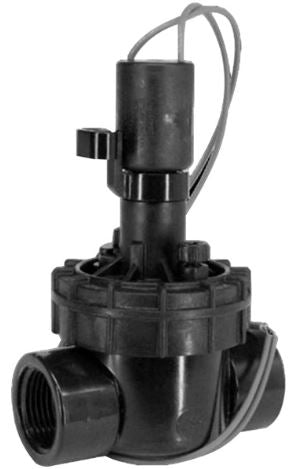Solenoid Valves
Elevate your irrigation system's efficiency with solenoid valves! These intelligent valves, including popular options from Toro and Irritrol, act as automated gateways within your system. Solenoid valves are electronically controlled, receiving signals from your irrigation controller to turn water flow on and off precisely. Choose from AC solenoid coils for standard power or DC solenoid coils for low-voltage applications. Irrigation solenoid valves ensure your plants receive the perfect amount of moisture at the right time, saving water and streamlining your watering routine. Shop now and discover the transformative power of solenoid valves!
-
Pope
Pope 25 mm Solenoid Valve with Flow Control
Original price $0.00 - Original price $0.00Original price$66.22$66.22 - $66.22Current price $66.22| /Overview Solenoid valves are used in automating your home irrigation system. Automated systems are programmed to water one garden area (zone) at a ...
View full detailsOriginal price $0.00 - Original price $0.00Original price$66.22$66.22 - $66.22Current price $66.22| /
FAQ's
What does a solenoid valve do in an irrigation system?
A solenoid valve acts like a switch for water flow in irrigation. When activated by an irrigation controller, it opens an internal passage, allowing water to flow to a specific zone (sprinklers, drip system) and closes when shut off by the controller, stopping water flow.
What is a solenoid valve diaphragm used for?
In a solenoid valve, the diaphragm is a crucial component that acts as a barrier between the control mechanism (electrical coil) and the fluid being controlled (water, air, etc.). It has two main functions:
Sealing: The diaphragm separates the pressurised fluid from the electrical components of the valve. This prevents water damage to the coil and ensures a safe electrical operation.
Controlling Flow: The diaphragm moves based on the energising or de-energising of the solenoid coil. When energised, the coil creates a magnetic field that pulls the diaphragm open, allowing fluid to flow through the valve. Conversely, when de-energised, the magnetic field collapses, and a spring or fluid pressure pushes the diaphragm back to its closed position, stopping the flow.
